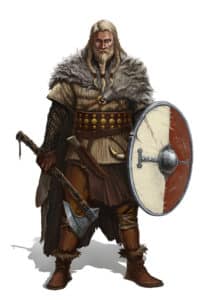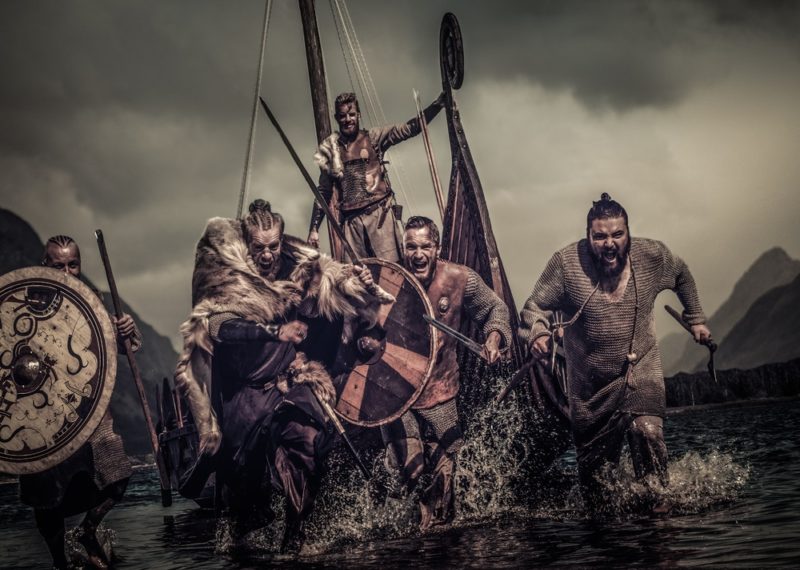Most people wear shoes every day; it’s a sign of the times where they want to feel comfortable and have quality footwear that looks good and wears well. However, it’s sometimes confusing to understand how Viking boots were made and whether they fit well. Overall, you might be surprised at the boots that Viking people wore during the Viking age.
Clearly, Viking men and women couldn’t go to a business location and ask for a special boot for all occasions. They didn’t have ways to request the right size or ship them to their homes. In fact, shipping and mail weren’t even considered at that time.
Along with this, the Viking men and women couldn’t search online or create an account to login and click on each color and find the perfect sizes for their feet. However, they still needed something with a sturdy sole that wasn’t too tight. A pair of Viking boots were often made of leather and might have been a size larger than other types of shoes. They had to wear them for walking and long periods, so the boots rarely lasted more than a month or so.
With that, they had to purchase the leather for whatever price it was at the time. There was no option to shop around, change technologies, and figure out the fit and design before they were worn or bought.
Let’s learn more about Viking boots and how they were made back in the day:
What Was Quality Footwear in the Viking Age?
Since archaeologists haven’t been able to find many clothing and shoe items from the Viking Age, the results people have to look at are based on stories told in that period. Overall, each account focuses on the excitement and not the boots they were wearing at the time.
Still, you should remember that the boots worn had to be comfortable and warm enough for the Vikings to wear for long periods. They had to be content and dry to walk and fight. There were likely many occasions where these leather boots protected them from the elements, so their construction had to be unique and durable enough for the task at hand.
The Vikings couldn’t just go online to order boots; they probably had to purchase the leather and then make their own items.

What Did Viking Boots Actually Look Like?
Viking boots were often made of goatskin or calfskin, according to the items that survived the Viking settlements. With that, the styles varied significantly.
Overall, the boots were not above the ankle for length, and they were usually closed with unique stitches on the inside. This design function made the footwear more durable.
Evidence of the rare surviving boots indicates that they were heeled. However, that’s likely only for merchants and healthy individuals. Average Vikings probably had no heel. A model like that might be easy to run in, which is often what the Viking people had to do.
Most notably, the Viking boots were secured with laces that wrapped around the ankles and the buttons used on the shoe. In most cases, the shoes for men and women used the same technologies and designs.
Materials and Tools Used to Make Viking Boots
Typically, Viking boots were made using leather. However, the process to create it was the turn-shoe technique. This shoemaking process actually stitched the shoes on the inside before they were pulled through and out into the final shape. Then, the boots were fastened using a toggle (or sometimes multiple toggles) that allowed for easy adjustments of the size. Generally, the sole was made to fit the person’s foot. Then, they could easily change the size for fits of different people.
Even though the boots were made of leather, they didn’t last as long as you might expect. After a few months, the boots had to be replaced. In fact, they rarely ever lasted more than one year, and the soles wore off frequently, calling for a replacement.
To make sure that these boots kept the person’s feet protected and warm, they had to be worn with socks. The socks were made with needle binding or Nalbinding. This process ensured tough-wearing, warm, and durable socks. Overall, mittens and scarves were also made with that technique.
A few years later, newer technologies were introduced to the Vikings. Therefore, rubber boots were used, which could improve the duration of wear and keep moisture away from the feet.
There were a few complete shoes found in England and Scandinavia from the Viking Age, and they all have similar characteristics. They’re soft, flexible, and made of cattle hide, though other leathers were used when that was all that was available.
Archaeologists found complete boots from the Oseberg ship burial mound located in Norway, Coppergate, and Denmark. All three of those discoveries show similar construction and form that was typical during the Middle Ages.
They have two primary parts: the uppers and soles. The shoemaker had stitched the shoe from the inside out, turning it to the right side when it was done. That was done to hide the seams, prevent moisture, and prolong the life of the shoe.
Generally, the cattle hide used was about 1 to 3 millimeters thick. The shoemaker used a metal needle or bristle to stitch hemp, flax, or a combination of them. Blades or shears cut the leather, and a regular awl punched the holes for the stitches.
Color and Tanning
Viking boots had to be tanned, and vegetable tan was the most common method. However, oil tans and alum tans were also used, especially for luxury leathers. The modern vegetable tans were actually stiffer because of industrialization. That shortened the process a lot, but they were unsuitable for turn shoes.
Therefore, the boots often used oil tans. As in the modern world, elaborate items were a sign of a higher social status. Scientists conclude that high-quality boots had more color than what was found in archaeological discoveries.
Comfort and Fashion Sense
Overall, the Viking lifestyle shows people their sense of fashion and clothing style, and that comes out through their boots. Overall, their fashion stands out because their clothes were known to be functional, comfortable, and warm.
There’s limited archaeological evidence about the clothing worn by this group of people. This is primarily because the materials and fabrics used didn’t preserve very well. Therefore, the recovered fragments found are damaged and small. However, written proof from Norse sagas indicates that the clothing and boots were made of distinct materials.
Notably, the clothing worn in the Viking era was usually influenced by the environment. Overall, they lived in an unforgiving, cold, and harsh area. The boots had to keep them warm and offer protection from the elements during usage.
FAQs
What Were the Viking Boots Made Of?
The boots were most often made of cattle hide leather, though other leathers were sometimes used. Typically, the price was right; since the Vikings had no access to shipping and could not order whatever materials they wanted by mail, they had to make do with what the merchants had.
Overall, space was limited, too. The Vikings had little room to store these items until they needed boots. Therefore, they bought what they required when the need arose.
Did They Have Beautiful Boots?
Generally, no. The Vikings wore boots for protection and usage. Their footwear wasn’t designed for beauty. In a sense, they wanted something easy to put on and comfortable to wear for long periods.
Did the Viking Boots Fit Perfectly?
The boot design used allowed for people to get the right size based on their needs. Generally, the size was a bit bigger, but they used toggles and other items to tighten them around the ankle or foot. Therefore, they were happy with the way they fit, but they knew little else, either.
Conclusion
On your search for Viking boots, you may have come across various options. These are designed to look good and may have different styles, such as the moon and stars on them. However, Vikings probably didn’t wear things like that. Their boots were solely there to keep their feet dry and offer comfort. The items weren’t there to look amazing.
Overall, the Vikings focused on functionality with their clothing. They were content to have things that fit well and did the job of protecting their feet and keeping them dry.



